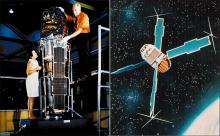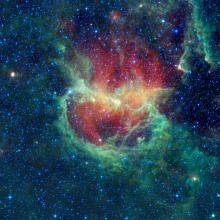Listen to today's episode of StarDate on the web the same day it airs in high-quality streaming audio without any extra ads or announcements. Choose a $8 one-month pass, or listen every day for a year for just $30.
You are here
EUVE
Astronomers learn about the universe by studying not just what’s there, but what’s not there as well. A case in point involves a space telescope that was launched 25 years ago today.
EUVE — the Extreme Ultraviolet Explorer — cataloged and studied more than 1200 hot stars and other objects. But the fact that it could see this many targets at all told astronomers a great deal about the material between the stars.
When EUVE was launched, astronomers weren’t sure just how much it would see. Extreme ultraviolet energy is produced by some of the hottest objects in the universe, such as the stellar corpses known as white dwarfs, and the disks of hot gas around supermassive black holes. But gas and dust between the stars absorbs these wavelengths. So some thought that EUVE might see only a few dozen stars through the interstellar “fog.”
Instead, the fog was pretty thin. And it wasn’t evenly distributed — the craft found big bubbles and gaps in the material between the stars, giving the galaxy the texture of Swiss cheese.
That allowed EUVE to study halos of hot gas around hundreds of stars; to watch powerful outbursts of energy from some of the smallest stars; and to map a “doughnut” of hot gas along the orbit of Io, one of the moons of Jupiter.
EUVE was shut down in January of 2001. It burned up when it plunged into the atmosphere a year later — ending a mission that told us a lot about what isn’t between the stars.




